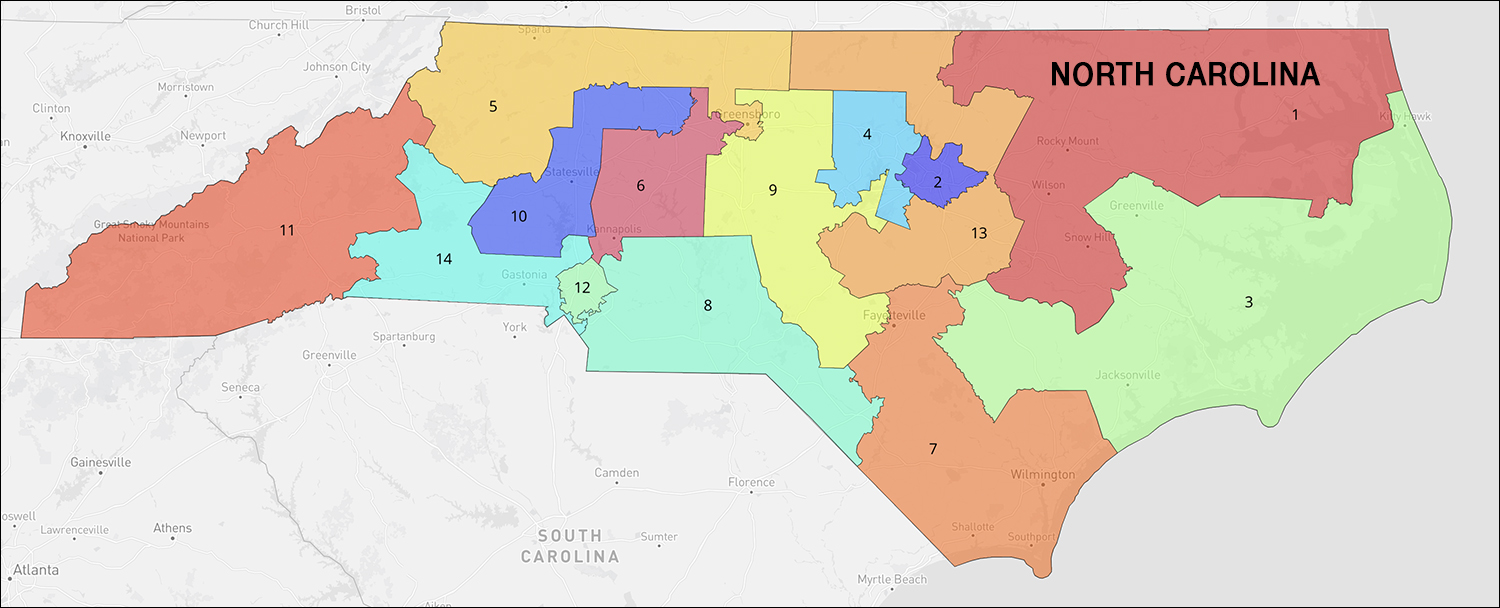By Jim Ellis — Tuesday, Nov. 18, 2025
Senate
A new Harper Polling survey of North Carolina likely voters produced positive numbers for Democrats, but other factors suggest the open Senate race is far from over.
Harper projects former Gov. Roy Cooper (D) to a lead beyond the polling margin of error for the 2026 Senate race. The underlying numbers, however, suggest that the Tar Heel State electorate could again generate another of its typically close finishes on Election Day.The Harper Polling survey, conducted for the Carolina Journal online news site (Nov. 9-10; 600 likely North Carolina general election voters; live interview & online), finds Cooper posting a 47-39 percent lead over former Republican National Committee chairman Michael Whatley (R). The North Carolina open Senate race is one of only two competitive Senate campaigns — Ohio being the other — that already sees its general election pairing because currently neither party is hosting a seriously competitive nomination battle.
Clearly, the Democrats have successfully recruited their best candidate. Roy Cooper has won six statewide races, two as Governor and four as Attorney General including the 2012 contest when he was unopposed. There was some speculation that Cooper would eschew a Senate run to enter the 2028 presidential contest, but apparently the national party leadership was able to convince him to stay home and attempt to flip the Senate majority.
Cooper’s 2020 re-election race, however, was an underperformance, thus giving Republicans a potential area of weakness to probe. While being considered a heavy favorite for re-election to a second term, he only won with a 51-47 percent margin over then-Lt. Gov. Dan Forest (R).
In mid to latter October of 2020, four polls were conducted in the state and then-Gov. Cooper led by an average of just below 13 percentage points. Yet, he only won with a four-point spread. That year, however, the turnout model favored the North Carolina Republicans as both President Trump and Sen. Thom Tillis (R) carried the state by small margins.
There are several further points to consider about the current Harper Polling survey. First, the eight-point Democratic spread is not particularly unusual for an early North Carolina poll. The state typically over-polls for Democrats, at least by two percentage points, which partially accounts for the Cooper margin in this poll.
Secondly, an unusually high 54 percent of the polling universe is female, which again pushes the ballot test toward the Democratic candidate.
Third, though not tested, Whatley’s name identification is obviously low. The evidence comes from the second ballot test question that pitted retired Navy JAG officer and author Don Brown (R), who has no statewide presence, against Cooper. Brown’s chances of winning the Republican nomination are virtually nil, so testing him against Cooper provides a base GOP benchmark.
In the Cooper-Brown ballot test, the Democratic former Governor leads by a similar 48-38 percent. The fact that Whatley and Brown post similar numbers and deficit margins is an indication that the Whatley name ID is low, thus his support level reverts to a benchmark figure.
Moreover, there are warning signs detected for all Republicans from this survey. The national right track-wrong track question that tests attitude shows 55 percent of the Harper, North Carolina respondents believe the country is on the wrong track. When asked the same about the state of North Carolina, 48 percent answered wrong track.
While these numbers are an improvement over what we were seeing during the end of the Biden Administration, they are not positive for the Trump presidency and largely confirms some of the trends we saw in the Nov. 4 elections from New Jersey, Virginia, and New York City.
Another warning sign for Republicans, and the heart of the negative trend, is the impression of today’s economy. Among these respondents, 58 percent said they are not confident about the economy as compared with 40 percent who said they are.
HP also asked an interesting question to better understand how the respondents feel about the economy. They found that 67 percent said they are planning to spend less for the upcoming holidays compared to only 14 percent who say they will spend more.
Finally, and still pertaining to the economy, the tariff policy is not popular with this North Carolina polling sample. A total of 53 percent said the tariffs hurt the national economy versus 38 percent who believe they help.
This poll, in a state that more often than not votes Republican by small margins, again highlights the economy as the most difficult issue the GOP candidates face.
Unless they can tell an improved story about how the Administration’s policies are improving everyone’s lifestyle especially when remembering that President Trump predicted his policies will create a “roaring American economy,” then the 2026 election results could well reflect the recent Nov. 4 electoral outcome.




